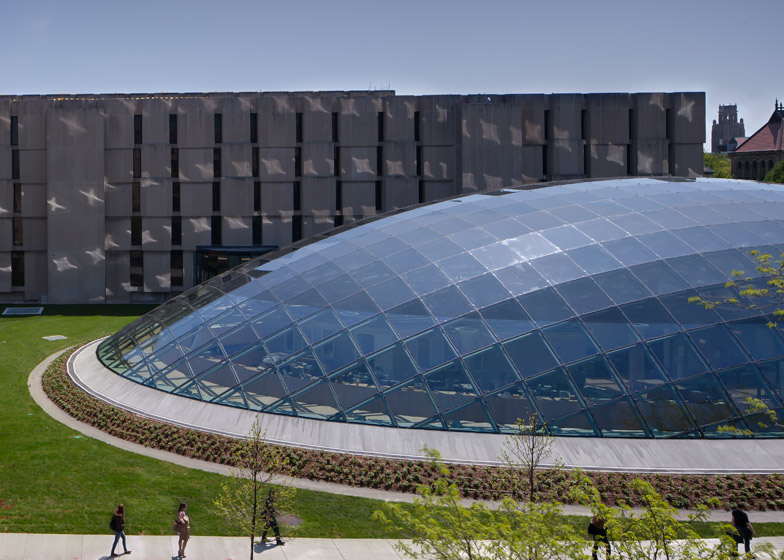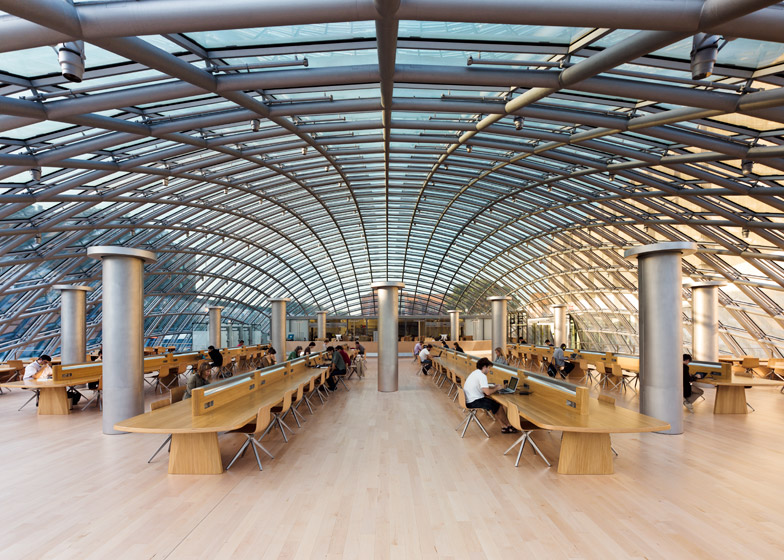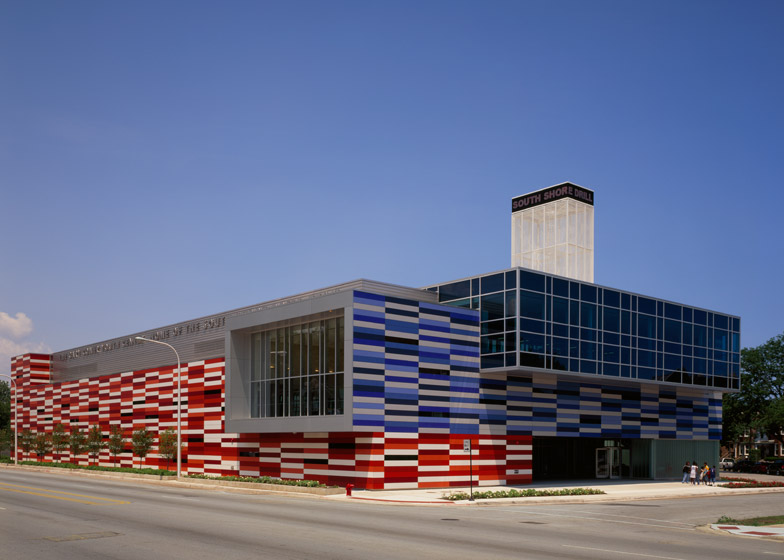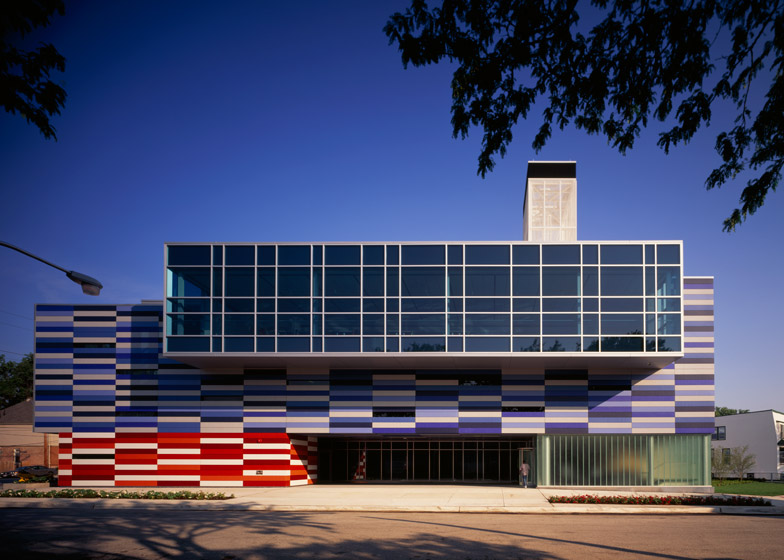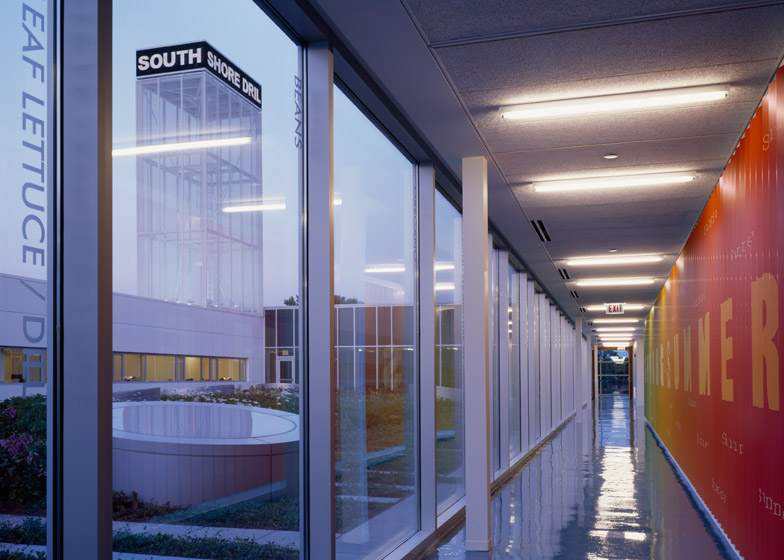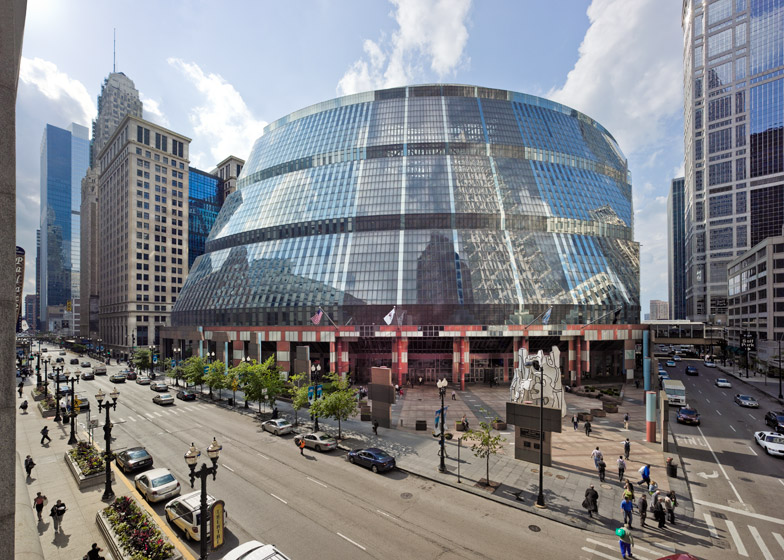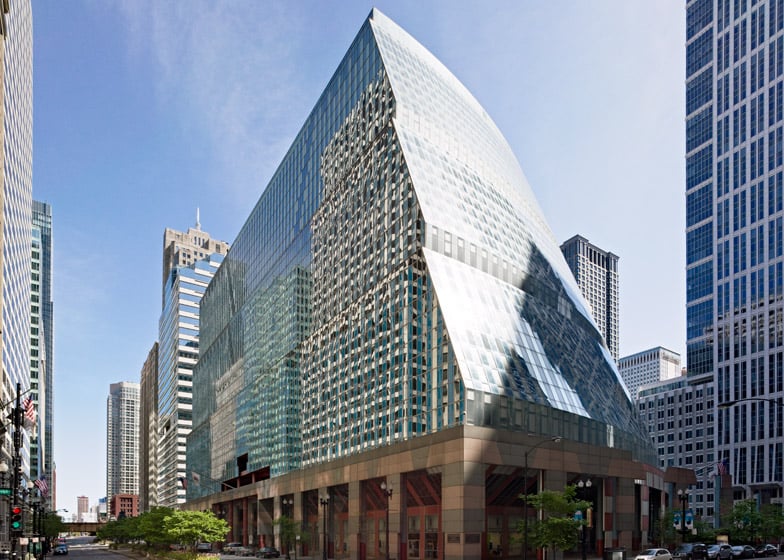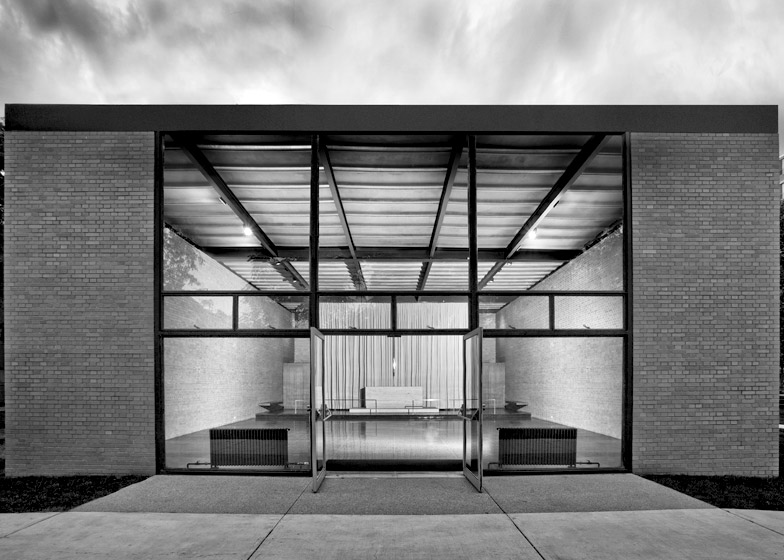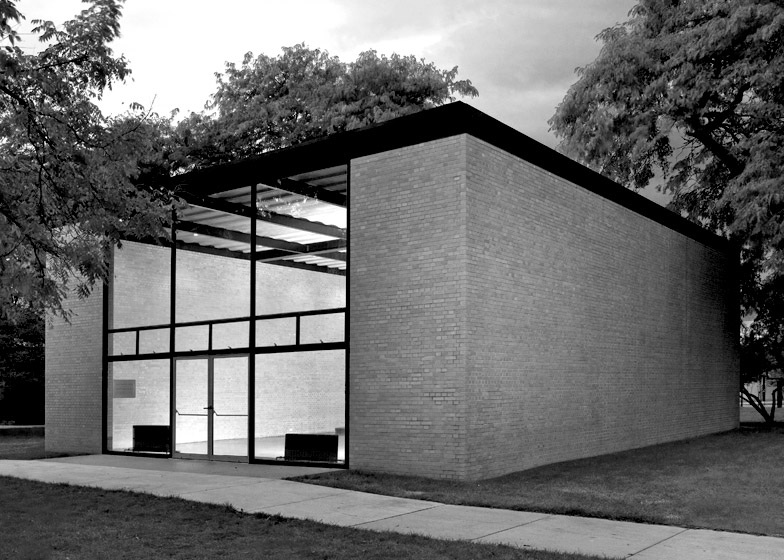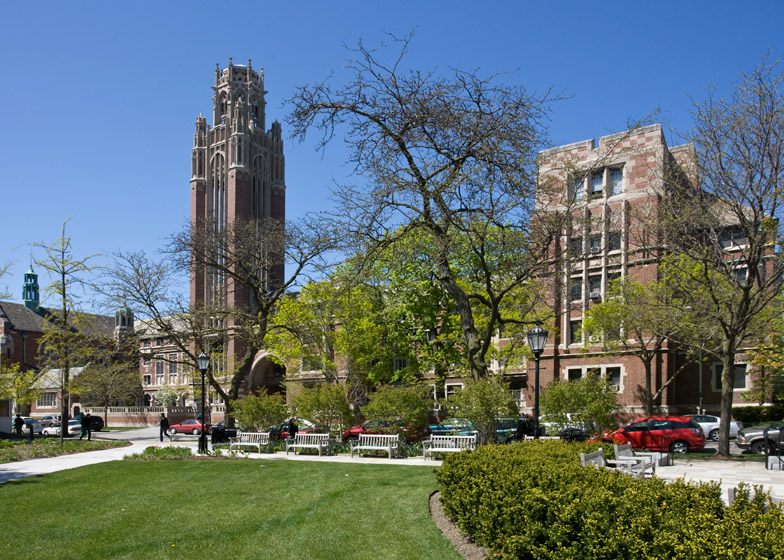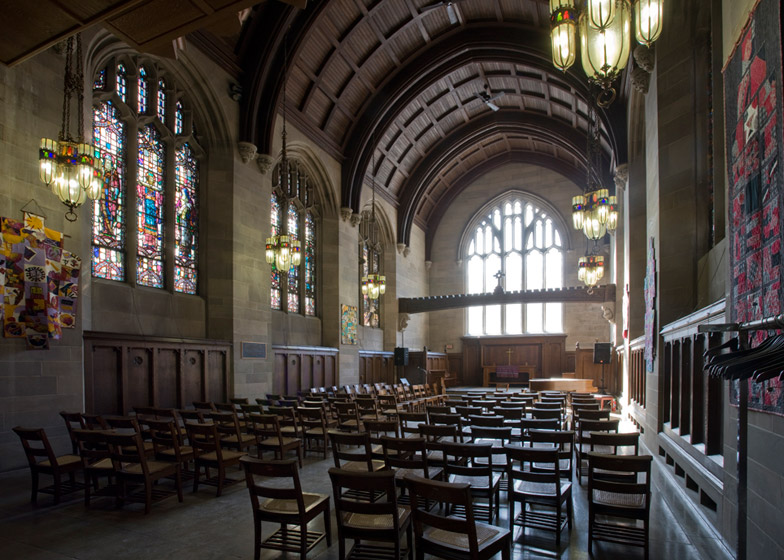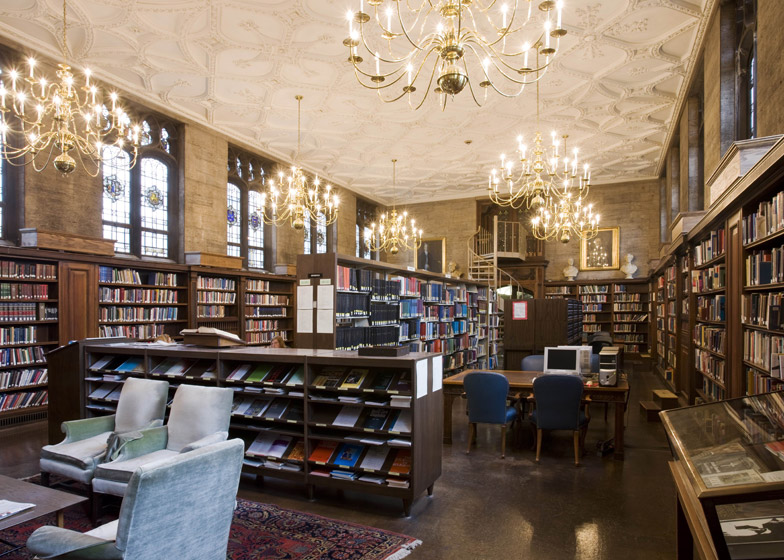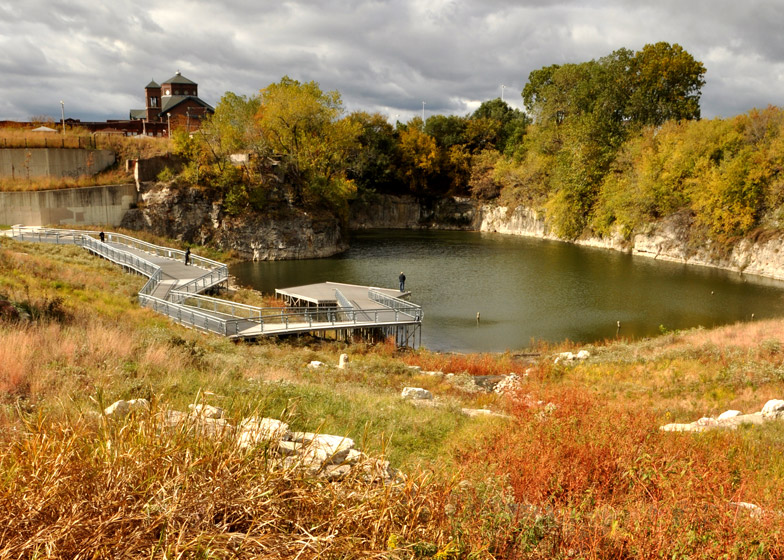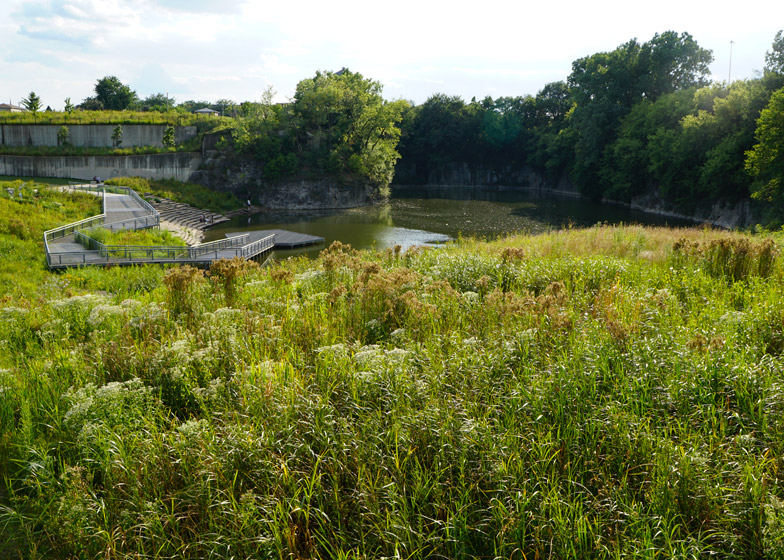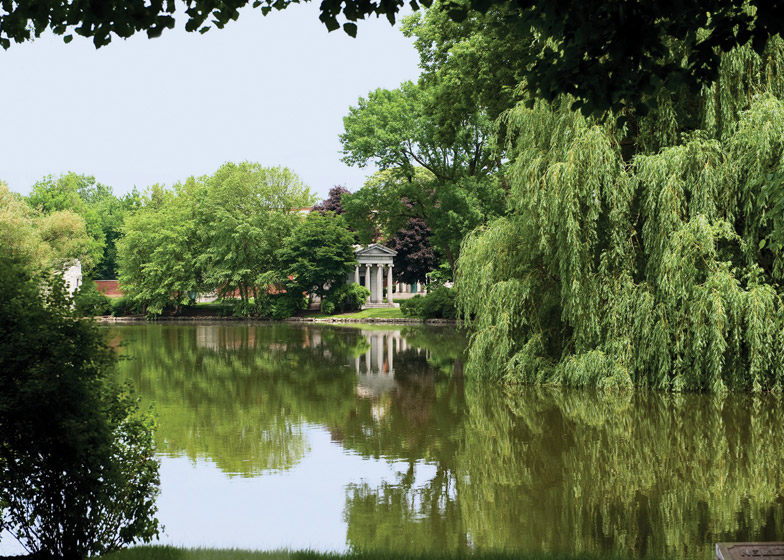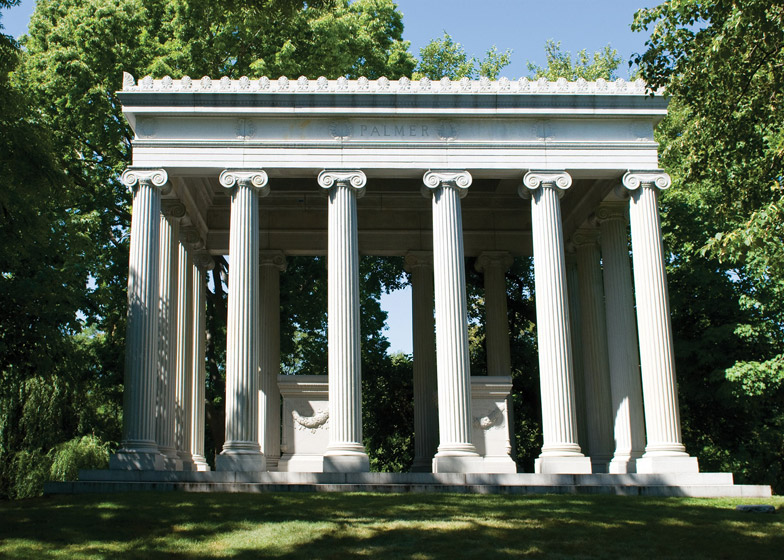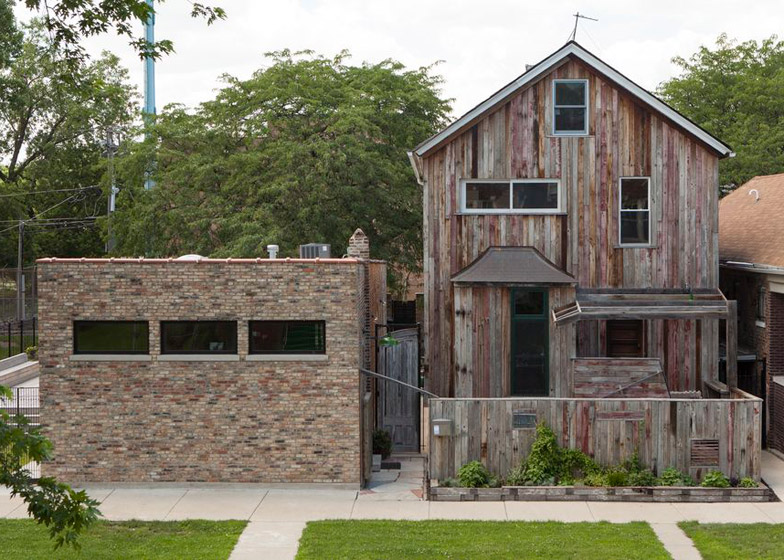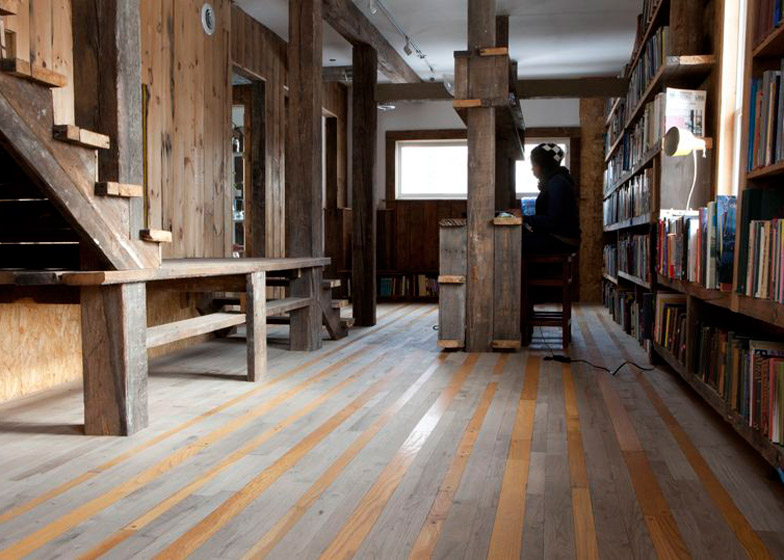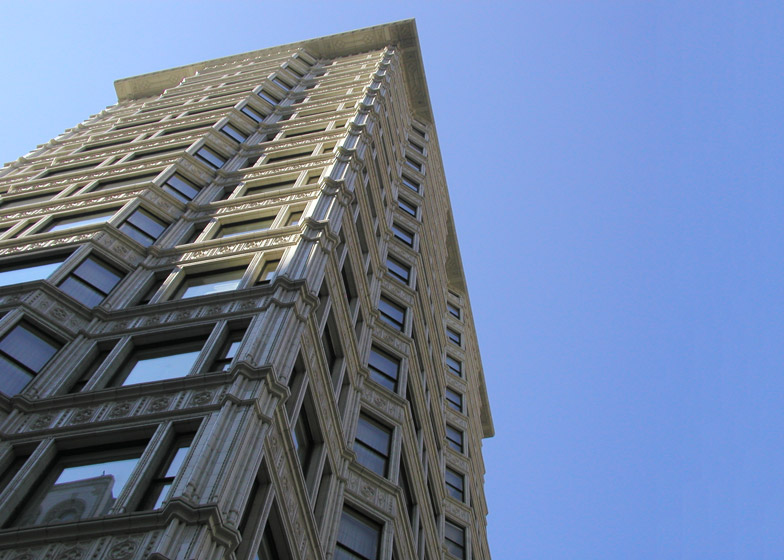Feature: visitors to the first Chicago Architecture Biennial, which opens later this week, will discover a raft of architectural treasures that are often overshadowed by the skyscrapers and institutions the city is famous for (+ slideshow).
While the biennial has concentrated most of its exhibitions near the downtown business district of the Loop and the lakefront, organisers have been careful to invite visitors to Chicago neighbourhoods further afield and mostly invisible to the city's cultural pacesetters.
When visitors trek about nine miles south of the Loop to see Theaster Gates' Stony Island Arts Bank, or to the Washington Park neighbourhood to take part in Amanda Williams' Color(ed) Theory housing painting finale, they'll be supporting architecture and design beyond the grand-scaled corporatist behemoths that have helped shape contemporary high-rise architecture.
Chicago's swathe of architectural history is too broad to be contained in just its gleaming downtown skyscrapers and most prosperous neighbourhoods. These 10 hidden gems are a good start to rounding out the rest of city's design heritage:
Pullman, 1880, by Solon Beaman
11141 S. Cottage Grove Avenue
Tucked inauspiciously into an industrial district on the city's far South Side, the Pullman neighbourhood is a page out of Chicago's most fractious history, nearly preserved whole.
The quintessential American company town, Pullman was built by luxury rail car magnate George Pullman in 1880. Pullman residents ate Pullman food from the Pullman store, went to sleep in Pullman beds in Pullman houses, and rode Pullman rail cars to Pullman factories. When George Pullman raised rent without increasing wages in 1893, there was a strike, and workers used Pullman barricades to prevent strikebreaking federal troops from entering the rail yards. The conflict ignited the Progressive Era labour movement, laying the foundations for worker's rights.
Pullman's architect was 26-year-old Solon Beaman, whose relative inexperience didn't stop him from churning out Queen Anne and Romanesque-style buildings that could have been plopped into affluent Chicago neighbourhoods without anyone batting an eye. There were (and still are) well-preserved workaday tenements meant for unskilled labourers, intimate blocks of red-brick row houses, palatial mansions for middle managers, and one grand (and mostly shuttered) Victorian hotel, the Hotel Florence. North of the residential area is the Pullman administration building and factories, where faded Victorian grace gives way to ruin porn.
Pullman is very much a small village within the city, many miles removed the modern energy of the Loop. Recently named a National Monument by President Obama, National Parks Service plans for preservation and redevelopment are afoot.
Saieh Hall, University of Chicago, 2014, by Ann Beha Architects
5757 S. University Avenue
William Rainey Harper, founding president of the University of Chicago, declared in 1892 that the school's inaugural class would be treated to no opening celebrations or pageantry. The upstart college – located not far from what was still an uncultured western frontier – was to appear as though it had always been there. The campus's slavish devotion to Neo-Gothic architecture was the first clue to its pretentions of longevity.
In 2014, Boston-based Ann Beha Architects completed an overhaul of one of the main buildings on the campus, Saieh Hall, which now houses the University of Chicago's Department of Economics. Beha converted the building's grand ecclesiastical spaces into meditative studies fit for a more secular program. A new entryway flanks a hallway walled in glass, creating a vitrine for the original brickwork. The largest chapel was remade into a graduate study lounge, where six massive sculptural chandeliers shaped like halos hang from a barrel-vaulted oak ceiling. Just enough religious iconography is left intact to remind visitors of the building's previous use, but not to trivialise it.
Saieh Hall is filled with eccentricities for the close observer: Mannerist stonework in the cloister study nooks, a completely functionless bell tower, and clerestory windows built into landscaping beds that bring light into underground lecture halls. "It's Hogwarts!" Beha has said of the building.
Robert Carr Memorial Chapel of St Savior, 1952, by Mies van der Rohe
65 E. 32nd Street
Dubbed "The God Box," the Robert Carr Memorial Chapel of St Savior is the only religious building that Mies van der Rohe ever designed. Located on the South Side campus of the Illinois Institute of Technology (IIT), the non-denominational chapel has the same boxy mass as every other Mies project. There's the same travertine as his Barcelona Pavilion, this time shaped into an altar. And the same terrazzo floor as S R Crown Hall (IIT's architecture school).
Related content: see more stories about Mies van der Rohe
This universal solution for all problems was considered a bad thing by Postmodern architects. But from a different perspective, the chapel can be viewed as the apotheosis of the Minimalism that Mies and the army of Midwestern Modernists that followed him were seeking. The pure space is fronted by an altar and a lone stainless steel cross mounted on beige drapes (the cross is the only explicitly religious icon in the chapel). The building was recently restored by the Mies van der Rohe Society.
Palmisano Park, 2010, by DIRT Studio and Site Design Group
27th and Halsted Streets
Palmisano Park is a 27-acre (11 hectare) lesson in the history of Chicago's land and economy. Designed by DIRT Studio and Site Design Group, the park occupies a former limestone quarry. Here, workers once mined rocks that made up the Chicago harbour and the canals that connected Chicago to the Mississippi River. When the quarry was shuttered in 1969, the area became a city dump for construction waste.
The park, which opened in 2010, carefully reveals each layer of this history. Harkening back to the wetlands that surrounded Lake Michigan, stepped terraces of plant life and angular metal catwalks lead visitors down to a two-acre fishing pond with a 25-foot (7.6 metre) limestone cliff. Behind the pond is a 33-foot-high (10 metre) hill dappled with prairie grasses. It's one of the few natural instances of topography in Chicago, a skyscraper-dotted metropolis that was built atop a pancake-flat swath of land.
The Reliance Building, 1895, by John Wellborn Root
32 N. State Street
From the bottom to the top, the 14-storey Reliance Building is a quick lesson in Chicago architecture before and after the epoch-defining 1893 World's Fair. Designed by John Wellborn Root, who was practising with Chicago-plan architect Daniel Burnham, the building's foundation and base are a ruddy granite accented with bronze.
Related content: explore more Chicago architecture projects
After Root died in 1891, his plans for the rest of the building were lost. Burnham hired Charles Atwood to complete the project, with a steel-framed proto-Modern tower clad in brilliant cream-coloured terracotta – a fire-resistant material that came into vogue after the Great Chicago Fire of 1871.
The Reliance Building's cutting-edge steel frame was built in just a matter of weeks. Its plate glass windows might not exude "transparency" by today's standards, but the extensive use of glass was notable in late 19th-century Chicago. Since 1999, the former office building has housed the Hotel Burnham and the Atwood Cafe.
Gary Comer Youth Center, 2006, by John Ronan Architects
7200 S. Ingleside Avenue
Commissioned by Lands' End clothing founder Gary Comer, this community centre in the impoverished neighbourhood of Grand Crossing – where Comer grew up – offers children a safe place to congregate. Designed by John Ronan, one of the city's highly regarded architects, the building is composed of stacked and cantilevered boxes that end in expansive glass walls. The exterior features red and blue fibre-cement panels, which obscure narrow bulletproof windows.
The horizontal lines are broken up by an 80-foot (24 metre) glass- and steel-framed tower with an LED system. In Chicago, this type of vertical place marker can cast allusions to a church steeple or a smokestack. In this case, the tower gives the community centre a strong presence in a struggling neighbourhood.
Inside, the building is organised around a 600-seat theatre and gymnasium. Classrooms, computer labs, art studios, and exhibition spaces pinwheel around this section, with interior walls of glass. Pierced with circular skylights, a green roof offers residents the chance to learn about growing vegetables and flowers. The centre sits next door to a high school, which also was commissioned by Comer and designed by Ronan.
Graceland Cemetery, 1860
4001 N. Clark Street
The Victorian-era Graceland Cemetery, founded in 1860, is the burial site of many famous Chicagoans, including politicians, architects and athletes. The grounds were designed by a group of architects and landscape architects (including William Le Baron Jenney), with the entrance gate and administration building conceived by Holabird & Roche. The cemetery contains tombs by Louis Sullivan and McKim Mead & White.
The gravestones of architects laid to rest at Graceland tend to reflect their design philosophies. German émigré Mies Van Der Rohe is buried under a black granite slab. Bruce Goff's headstone includes a crystalline chunk of cullet glass that was part of one of the houses he designed. A concrete footbridge across a pond leads visitors to the pastoral Burnham Island, where a simple boulder marks the burial site of Daniel Burnham.
George Pullman, the founder of the Pullman company town (mentioned above), hired the architect Solon Beaman to design his gravestone: a tall Corinthian column placed on a terraced pedestal. Beaman incorporated a few extra security features to protect the grave from desecration, namely a concrete block surrounding the coffin secured with railroad ties.
James R Thompson Center, 1985, by Helmut Jahn
100 W. Randolph Street
The James Thompson Center is one of the finest works of Chicago architecture created in the 1980s. Designed by German émigré Helmut Jahn, the office building houses dozens of state agencies, along with the Illinois governor's Chicago office. Its circular atrium gives visitors an overwhelming view of glass-walled elevators, floating staircases, and floor plates stacked up to 17 stories. A massive canted oculus illuminates the space.
Outside, its pie-wedge footprint takes up an entire block. The building's colours (salmon and robin's egg blue) are a bit dated and garish, and the building has been suffering from a lack of maintenance. But the James Thompson Center remains a distinctive building from an underwhelming decade in Chicago's architectural history.
The Dorchester Projects, 2009, by Theaster Gates
6916 S. Dorchester Avenue
Theaster Gates is a designer working at the intersection of art, architecture, urban planning and community development. His work follows a very particular rhythm. First, buy up a disused property on the city's impoverished South Side. Next, renovate the property and create art out of discarded material – a wall hanging made of old hoses and wood, for instance. Then, sell the art to patrons for large sums of money. "I'm not really an artist. I'm probably first a hustler," he told the New Yorker.
The money earned is recycled back into the neighbourhood to create community and cultural spaces. Gates has converted a cluster of abandoned dwellings on the South Side into bookshops, listening rooms, and a library for vinyl records. Called The Dorchester Projects, his undertaking is part artistic pursuit, part urban regeneration. During the Biennial, he will debut his latest completed work: a derelict bank that has been transformed into an arts centre dubbed the Stony Island Arts Bank.
Joe and Rika Mansueto Library, 2011, by Helmut Jahn
1100 E. 57th Street
The University of Chicago's Joe and Rika Mansueto Library stashes its 3.5 million volumes underground and out of sight. But the Helmut Jahn-designed building bursts above the surface with a 40-foot-tall (12 metre) glass dome reading room. Students request books and have them delivered in minutes, thanks to a robot (the Automated Storage and Retrieval System, or ASRS) who trawls the underground stacks.
The dome is made of steel lattices, metal columns and blonde wood. Jahn's building is connected to the Joseph Regenstein Library, a Brutalist building by SOM, via an enclosed glass walkway. The two buildings form a complementary composition: the cube and the circle. They also both represents departures from the university's Neo-Gothic architectural traditions.
Zach Mortice is an architectural journalist based in Chicago. He was formerly the managing editor of the American Institute of Architects' AIA Architect.


